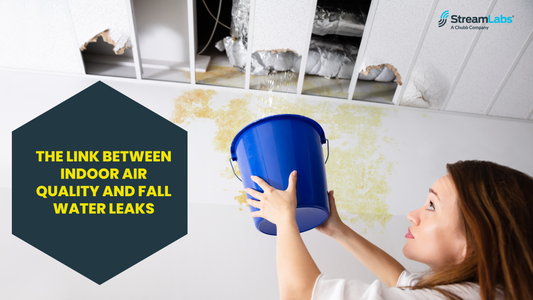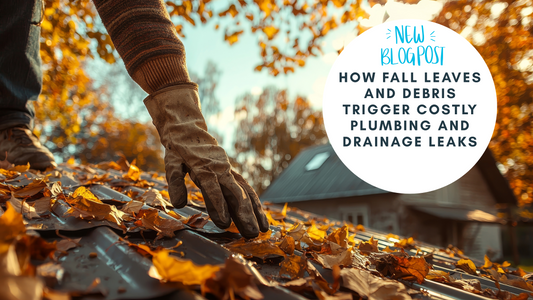How we track water is changing, and it’s becoming more important than ever.
For water monitoring to be useful to homeowners, it must be accurate and accessible. That’s been the driving factor of the StreamLabs Monitor, which puts real-time water usage insights in the palm of your hand. By using water monitors, homeowners can see their water consumption, and with that information, can be more conservative with water, helping their budget and the environment.
But it wasn’t always this easy to keep tabs on residential water usage. So how did we get to where we are? In honor of World Water Monitoring Day, Sept. 18, we explore how water monitors have evolved.
1815: Positive Displacement Flow Meters
Because of the winter freezes, Northern states were the first part of the U.S. to adopt water meter usage. Invented in the 19th century, positive displacement flow meters, particularly conical disk meters, became a popular way to drain water to prevent frozen pipes.
The benefit: With positive displacement meters, or PD meters, water flows through them to push, or displace, a device to measure the amount of water. Because of that, PD meters worked well in monitoring low to moderate flow rates.
1833: Magnetic Water Meters
Magnetic water meters, or magnetic drive meters, were developed mainly during the first half of the 1900 and used quite a bit of math to measure water flow. Put simply, the magnetic water meters used a magnet, often neodymium, to create a magnetic field around a section of pipe. Particles in the water would change the voltage in the magnetic field as they moved through the pipe. The voltage could then be used to calculate the speed of the water moving through the pipe, or the flow.
The benefit: These work best when flow is stable and the pipe is full. The invention of different magnetic drive meters, which fall into the larger group of velocity-type meters, also led to better monitoring of low water flow.
1959: Ultrasonic Flow Meters
Ultrasonic flow technology entered the scene in 1959 and evolved quickly over the following 20 years. These water meters use ultrasonic technology to transmit sound waves through the water in a pipe to determine the flow rate.
The benefit: Ultrasonic flow meters, which can either clamp onto a pipe or be embedded in it, are known for their accuracy.
1977: Automated Meter Reading System
The first fully automated, commercially available remote water meter reading and load management system was invented in 1977. It sent water usage data to an electronic automatic meter reading, or AMR, device.
The benefit: This greatly improved the accuracy, timeliness and transparency of water meter readings.
The automated meter reading system only sent information to the utility, though, not directly to homeowners. This delayed data that informed customers of possible leaks or abnormal water usage. Even today, you typically have to wait on your utility bill to check monthly water consumption.
2018: The StreamLabs Monitor Pairs a Remote Water Meter with Ultrasonic Tech
Inspired by the non-invasive ultrasonic systems used to monitor gas and oil in pipes, the StreamLabs Monitor combines ultrasonic tech and its own kind of automated meter reading system to solve the delayed data problem using Wi-Fi and an app, providing homeowners with a DIY option for better understanding and controlling their water usage.
Time-of-flight Ultrasonic Technology
Launched by RWC in 2018, the noninvasive clamp-on device uses time-of-flight ultrasonic technology, which was developed in the 1990s. It sends sound waves upstream and downstream, measuring the difference in time of flight to record flow, which is then displayed in the StreamLabs app.
How Does the Monitor Compare to Other Systems?
Other water monitoring products function primarily as leak alert systems, detecting only the presence of water, or whether water is flowing or not. The StreamLabs Monitor focuses on leak prevention and water conservation by measuring and reporting water flow in real time through an app integration — something that wasn’t yet seen in water monitoring.
Some of its unique capabilities include:
- Use of ultrasonic waves to measure water flow as well as pipe type and size.
- Easy setup compared to prior systems that required special equipment and training to install.
- Use of a low voltage DC supply for power and Wi-Fi connection to provide 24/7 real-time reading of water usage to a smart device.
The benefit: The combined ease of installation and real-time information, which are unique to the Monitor, gives homeowners a better idea of what’s going on behind their walls. That means you can make adjustments before you get a high water bill or keep an eye on a rental property.
2019: Going Beyond Water Metering with a Smart Water Shut-off Valve
Today, 69% of U.S. homes own at least one smart home device, according to the Consumer Technology Association. And most of the time, they’re controlling it from their mobile device. With the rise of smart homes and the emphasis on home security, smart water technology’s role in leak detection was the natural next step to water monitoring.
Adding another layer to the real-time leak detection of the Monitor, remote shut-off devices like the StreamLabs Control track water usage and give you the ability to turn off your water from the app. The Control can also shut the water off automatically if a leak is detected.
With water damage being 7 times more likely to happen than fire and 5 times more likely than theft, smart leak detection devices are just as necessary to the home as smoke detectors and alarm systems.
Recognizing smart water technology as vital to the home pushes smart plumbing forward, with future innovations in the works that that will focus on whole-system control as well as water quality monitoring.
To explore how StreamLabs’ smart water devices can best serve you today, compare the water monitoring and leak detection devices.
SOURCES:
- https://www.detectronic.org/a-brief-history-of-ultrasonic-flow-meters/#:~:text=In%201959%2C%20Satomura%20created%20an,industrial%20applications%20made%20their%20appearance.
- https://www.researchgate.net/publication/283045743_A_SHORT_HISTORY_OF_RESIDENTIAL_WATER_METERS_PART_III_IMPROVEMENTS_OF_WATER_METERS





